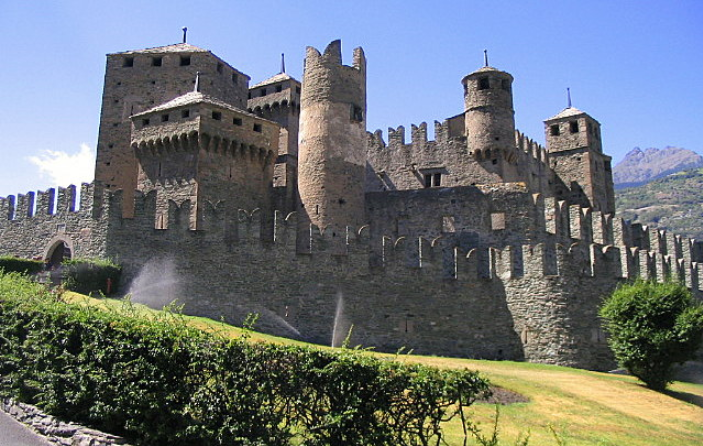
You really don’t know the Alps if you haven’t been to the Val d’Aosta, the smallest of the Italian regions, where the highest peaks of the alpine arc are found, from Monte Bianco to the Gran Paradiso. Sitting practically in the middle of the region, Aosta is a city with a century-old history and its Arch of Augusto, ruins of the forum, theatre, and Pretoria door, all tell of a glorious past, of the Augusta Praetoria founded in 25 BC. Crossed by the Dora Baltea, Aosta is located at the junction of the roads leading to the Monte Bianco and San Bernardo tunnels and its countryside is filled with castles. The artistic heritage of this region is enormous, and in fact it is calculated that there are more than one hundred castles spread over the territory. The Val d’Aosta also has another privilege, represented by its inestimable naturalistic heritage that is probably better-preserved than in any other region in Italy.
Gran Paradiso National Park
Created in 1922, the Gran Paradiso National Park was the first protected area in Italy. The principal objective was to protect the ibex, the most characteristic hoofed animal of the Alps. Since then the number of ibex (which have now become extinct elsewhere in the Alps) has grown considerably, so much so that it has been possible to repopulate other Alpine areas. But the ibex is not the only object of interest in the wildlife of this park; there are many chamois, marmots, ermine and various species of hare, as well as numerous birds, including the golden eagle. In addition to the interesting fauna, the Gran Paradiso massif also offers superb mountain scenery, ranging from glaciers, soaring peaks, pine forests, rivers and waterfalls to high altitude meadows. The visitor can gain access to the park from many of the valleys descending from the massif: the valleys of the Rhémes, Savarenche, and Cogne in Val d’Aosta, or from Piemonte, Val Soana and Val Locana, the main town of which is Ceresole Reale. Still in the Alps, but in the central-eastern sector, there is another great park: the Stelvio, covering part of the territory of Lombardy and part of Trentino-Alto Adige. It is the most extensive national park in Italy and was created in 1935 to safeguard the environment of the Ortles-Cevedale massif, with its wealth of woods, waters and glaciers (over a hundred, including the largest in Italy, the Forno). Its abundant wildlife is dominated by deer, roe and chamois. Interesting bird species include mountain pheasants and francolin, which are very rare elsewhere. Tourists can make use of the visitors’ centres of Bormio, Vezza d’Oglio, Silandro, Bagni di Rabbi and Cogolo di Pejo. These two Alpine Parks are crossed by a network of paths leading to mountain refuges and high-altitude camps. These areas also have visitors’ centres and Alpine botanical gardens (Paradisia in Gran Paradiso and Rezia in Stelvio).
Aosta
Aosta Surrounded by tall mountains, Aosta is a city of art and culture, characterised by the beauty of the scenery. Conquered by the Romans in 25 B.C., Aosta has preserved many architectural works of art most of which are dedicated to Emperor Augustus, the city was in fact called Augusta Pretoria. The medieval city was fortified by the Dukes of Aosta who added towers to the Roman walls. Today Aosta is a crossroads for local industries and tourists heading for the mountains. The centre has maintained its elegant squares and architectural treasures that justify the nickname of “Rome of the Alps” once given to the city.


